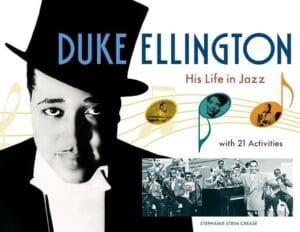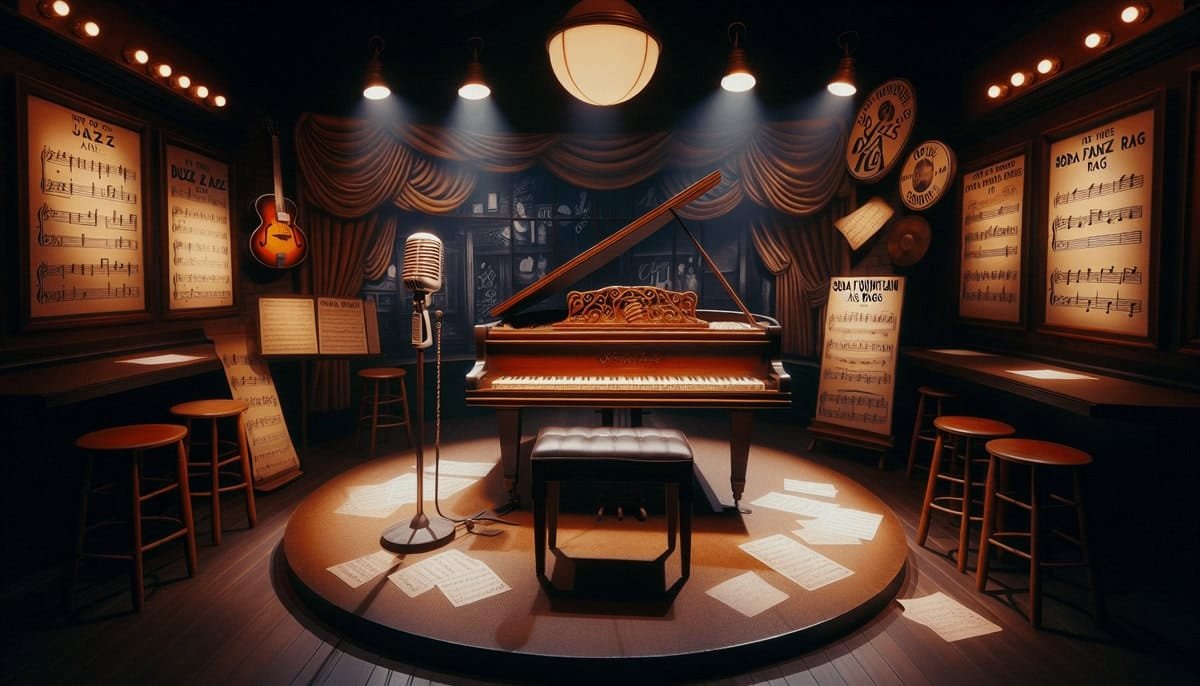You know, jazz didn't just show up at the Harlem Renaissance; it practically took center stage and performed its heart out! As African Americans flocked to Harlem, this genre exploded, mixing everything from African beats to European melodies. Artists like Duke Ellington and Billie Holiday transformed music into a powerful voice for identity and pride. Jazz clubs flourished, sparking social movements and a new cultural vibe. Imagine dancing the Charleston while your neighbor writes jazz-inspired poetry — it was pure magic! If you're curious about how this vibrant scene shaped music and society, let's just say there's more jazz in store for you!
Key Takeaways
- The Harlem Renaissance was pivotal in defining African American identity through the celebration of jazz music and cultural expression.
- Jazz emerged as a symbol of cultural pride and resilience, influencing societal norms during the 1920s.
- Influential artists like Duke Ellington and Billie Holiday shaped jazz's popularity, integrating it into American culture.
- Jazz clubs in Harlem provided a platform for social movements, challenging racial stereotypes and fostering community.
- The legacy of the Harlem Renaissance continues to inspire contemporary artists, highlighting themes of unity and empowerment in jazz.
Historical Overview of Harlem
Harlem's vibrant evolution into a cultural epicenter is a demonstration of resilience and creativity.
Imagine this: in the early 20th century, Harlem was like that neighborhood you never want to leave, but it wasn't always the cool place it's today. Back then, it was mainly populated by white folks, but thanks to the Great Migration, which brought nearly 175,000 African Americans looking for a better life, the Harlem demographics started to shift.
Suddenly, you'd this melting pot of Southern Blacks and West Indian immigrants, all bringing their unique flavors to the scene.
The Emergence of Jazz
Jazz emerged in the early 20th century as a revolutionary blend of African American musical traditions, and it's impossible to overstate its impact on American culture.
Picture New Orleans, where cultures collided like a jazz band at a wedding—everyone's playing their own tune, but somehow, it all sounds beautiful. This city became the birthplace of jazz, creating a musical fusion of African beats, Creole rhythms, and European melodies that just clicked.
As you immerse yourself in this world, you can almost hear the blues and ragtime mingling, giving birth to a new improvisational style. The Harlem Renaissance of the 1920s turned jazz into a cultural phenomenon, with venues like The Cotton Club and the Apollo Theater shining like bright beacons of creativity.
You might even feel like you're there, tapping your feet, sipping a soda, and wondering if you can dance without stepping on anyone's toes.
Jazz wasn't just music; it was a symbol of resilience, a way for African Americans to express pride in a society that often tried to silence them.
Influential Artists and Musicians
Transforming the musical landscape, influential artists and musicians played a crucial role in shaping jazz during the Harlem Renaissance. You've probably heard of Louis Armstrong and Duke Ellington—these guys didn't just play jazz; they practically put it on the map! Their music echoed through iconic venues like the Cotton Club and the Apollo Theater, where the magic of jazz improvisation truly came alive.
And let's not forget Billie Holiday, whose voice could melt even the coldest heart. Seriously, if her songs don't make you feel something, check your pulse!
Now, what really gets me excited are the influential collaborations of this era. Imagine a jam session with Charlie Parker and Thelonious Monk—talk about a musical dream team! They took jazz improvisation to a whole new level, creating sounds that made you want to dance, cry, or maybe just sit back and ponder life's big questions, like why your cat stares at you so intently.
The Harlem Renaissance didn't just spotlight jazz; it celebrated it as a legitimate cultural expression. So, next time you hear a jazz tune, remember the legends who made it all possible!
Cultural Impact of Jazz
During the 1920s, jazz emerged as a powerful cultural force that not only defined African American identity but also reshaped the broader American landscape. You see, jazz wasn't just music; it was a celebration of freedom, improvisation, and, let's be honest, a chance to show off some killer dance moves like the Charleston and Lindy Hop. Who knew flailing your arms could be so much fun?
But really, jazz was more than just catchy tunes. It sparked social movements that challenged norms and encouraged artistic collaborations between musicians and poets. Writers like Langston Hughes brought jazz into their poetry, creating a beautiful blend of words and music that made life feel like a vibrant, expressive canvas.
Imagine stepping into the Cotton Club or the Apollo Theater, where legends like Louis Armstrong and Duke Ellington created magic. You'd feel the energy, the excitement, and maybe a little bit of envy as you watched those incredible performers.
Jazz transformed not just music but attitudes toward race and culture, helping everyone recognize the artistic contributions of African Americans. So, whether you were dancing or just tapping your foot, jazz was the heartbeat of the Harlem Renaissance, and honestly, it just made life a whole lot cooler!
Fashion Trends in the Renaissance
The Harlem Renaissance marked a vibrant shift in fashion, reflecting not just style but a powerful statement of identity and freedom. Imagine stepping into Harlem during this time; you'd see women in drop-waisted dresses that flowed like a melody, adorned with extravagant accessories that screamed, "Look at me!" It was like they were dancing through life, showing off a newfound freedom and modernity.
Meanwhile, men strutted their stuff in zoot suits, those oversized jackets and tapered trousers practically shouting against economic constraints—kind of like me trying to shout over my own fashion faux pas!
The influence of jazz music was palpable, weaving its way into the fabric of Harlem's nightlife. You'd notice how stylish attire became a must for nights at the Apollo Theater, where cultural expression was as important as the rhythms of the saxophone.
Fashion wasn't just about looking good; it was about pride, self-expression, and celebrating African American culture against a backdrop of racial oppression. Designers and tailors in Harlem recognized this need, sparking a fashion evolution that highlighted creativity and community.
Legacy of the Harlem Renaissance
You know, the Harlem Renaissance wasn't just about cool hats and snazzy dance moves; it actually helped shape African American cultural identity in a way that still echoes today.
When you listen to modern musicians, you might catch them channeling the vibes of legends like Duke Ellington or Billie Holiday—it's almost like they're whispering secrets from the past!
Cultural Identity Formation
Emerging from the shadows of oppression, the Harlem Renaissance sparked a vibrant cultural identity among African Americans that continues to resonate today.
Imagine this: artists like Langston Hughes and Duke Ellington, strutting their stuff in Harlem, weaving shared experiences of struggle into jazz and poetry. It's like they threw a big cultural party, and everyone was invited—except the naysayers, of course!
You see, this movement didn't just stop at music and literature; it challenged racial stereotypes and made African American heritage something to be proud of.
Who wouldn't want to redefine their narrative? The Apollo Theater became a hotspot, showcasing talent that could make even your grandma tap her feet!
Artists poured their hearts into their work, blending rhythms and words to reflect the realities of Black life, creating artistic expressions that still inspire today.
Influence on Future Artists
Many artists today owe a debt of gratitude to the Harlem Renaissance, which not only reshaped cultural identity but also set a powerful precedent for exploring themes of race and social justice. You might be wondering how a bunch of folks from the 1920s could influence today's music and art—well, let me break it down for you.
The Harlem Renaissance sparked artistic innovation, inspiring figures like Langston Hughes and Duke Ellington to tackle social commentary in their work. Their impact didn't stop there. It paved the way for modern legends like Beyoncé and Kendrick Lamar, who channel those same themes in their songs.
Check out this table to see how the influence flows:
| Artist/Movement | Harlem Renaissance Influence | Modern Impact |
|---|---|---|
| Langston Hughes | Explored race and identity | Inspired contemporary poets |
| Duke Ellington | Revolutionized jazz | Influenced modern jazz artists |
| Miles Davis | Built on jazz foundations | Innovated in various genres |
| Kendrick Lamar | Engages with social justice | Connects history to the present |
| Beyoncé | Represents cultural pride | Celebrates black womanhood |
Conclusion
So, as we wrap this up like a classic jazz record, it's clear that the Harlem Renaissance wasn't just a time; it was a vibrant symphony of culture, creativity, and change. Jazz, with its improvisation like a cat trying to land on its feet, transformed lives and inspired style. Just like a good pair of dancing shoes, it left a mark that still makes us tap our feet today. Remember, life's a jam session, so let's keep playing!


